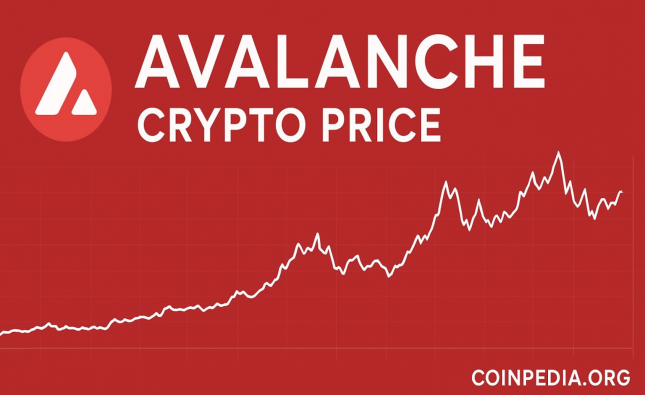
Inflation is a significant economic factor that affects the purchasing power of money and influences investment returns. As prices rise, the value of money decreases, which can erode the gains from investments. This article will explore the relationship between inflation and investment returns, providing a clear understanding of how inflation impacts various types of investments.
What is Inflation?
Inflation refers to the general increase in prices of goods and services over time. It is typically measured by the Consumer Price Index (CPI) or the Producer Price Index (PPI). A moderate level of inflation is considered normal in a growing economy; however, high inflation can lead to economic instability.

Causes of Inflation
Inflation can result from several factors, including:
- Demand-Pull Inflation: Occurs when demand for goods and services exceeds supply.
- Cost-Push Inflation: Arises from increased costs of production, leading to higher prices for consumers.
- Built-In Inflation: Results from the expectation of future inflation, causing wages and prices to rise.
The Importance of Understanding Inflation in Investment
Investors need to comprehend inflation’s effects on their portfolios to make informed decisions. Ignoring inflation can lead to poor investment choices and diminished returns. Here’s why understanding inflation is crucial:
- Preservation of Capital: Investors aim to maintain the value of their capital over time.
- Real Returns: It’s essential to differentiate between nominal returns (the stated return) and real returns (adjusted for inflation).
Table 1: Nominal vs. Real Returns
| Metric | Nominal Returns | Real Returns (after 3% inflation) |
|---|---|---|
| Investment A | 5% | 2% |
| Investment B | 7% | 4% |
| Investment C | 10% | 7% |
The Role of Central Banks in Controlling Inflation
Central banks, such as the Federal Reserve in the United States, play a pivotal role in managing inflation. They employ monetary policy tools to influence interest rates and control the money supply. By adjusting these levers, central banks aim to maintain price stability and support economic growth. Understanding how central banks respond to inflation can help investors anticipate shifts in the market and make informed investment decisions.
Interest Rates and Inflation
One of the primary tools central banks use to control inflation is the adjustment of interest rates. When inflation rises, central banks may increase interest rates to cool down the economy. Higher interest rates can lead to increased borrowing costs, which may slow consumer spending and business investment. For investors, rising interest rates can impact various asset classes, particularly bonds and real estate, as the cost of financing increases.
The Inflation-Expectations Link
Inflation expectations can significantly influence actual inflation rates. If consumers and businesses expect prices to rise, they may adjust their behaviors, such as demanding higher wages or increasing prices for goods and services. This self-fulfilling prophecy can lead to a more persistent inflation cycle. Investors must monitor inflation expectations, as they can affect market sentiment and asset prices.
Historical Context: Inflation and Market Performance
Historically, inflation has varied significantly, impacting investment returns differently across periods. For instance, during the 1970s, high inflation rates led to stagnant economic growth, known as stagflation. Investors faced challenging conditions as both stocks and bonds struggled to provide positive returns. Understanding historical trends can help investors contextualize current inflation levels and make informed decisions based on past market behavior.
Long-Term Investments and Inflation
While inflation poses challenges, long-term investments can often weather these fluctuations better than short-term holdings. Over extended periods, equities, in particular, have historically outperformed inflation, providing real returns to investors. This long-term perspective can be vital for those looking to grow their wealth despite short-term inflationary pressures.
Behavioral Finance: Investor Reactions to Inflation
Behavioral finance examines how psychological factors influence investor decisions. During periods of high inflation, panic and uncertainty can lead to hasty investment choices. Investors may flee to perceived safe havens like gold or cash, potentially missing out on opportunities in equities or real estate. Understanding these behavioral tendencies can help investors maintain a disciplined approach and avoid rash decisions during volatile times.
The Global Perspective on Inflation
Inflation is not a uniform phenomenon; it can vary significantly between countries. Emerging markets may experience higher inflation rates compared to developed economies, influencing the performance of investments. Investors with global portfolios must consider the impact of inflation in different regions and how it can affect currency values and investment returns.
The Effects of Inflation on Different Types of Investments
Inflation impacts various asset classes differently. Understanding these dynamics can help investors make better choices.
Stocks
Stocks are often considered a good hedge against inflation because companies can increase prices to maintain profit margins. However, inflation can also squeeze margins if input costs rise faster than consumer prices.
Bonds
Bonds are particularly vulnerable to inflation. When inflation rises, fixed interest payments become less valuable, leading to lower bond prices. Investors often seek inflation-protected securities, such as Treasury Inflation-Protected Securities (TIPS), which adjust principal according to inflation.
Real Estate
Real estate investments can offer a hedge against inflation, as property values and rental incomes tend to rise with inflation. However, high inflation can also increase borrowing costs, impacting real estate demand.
Commodities
Commodities, like gold and oil, often perform well during inflationary periods. They are tangible assets that tend to retain value as currency loses purchasing power.
Comparative Analysis of Inflation’s Impact on Investment Returns
To further illustrate how different asset classes react to inflation, let’s look at a comparative table.
Table 2: Comparative Impact of Inflation on Investment Types
| Investment Type | Sensitivity to Inflation | Historical Performance during High Inflation |
|---|---|---|
| Stocks | Moderate | Generally positive, but depends on sector |
| Bonds | High | Typically negative |
| Real Estate | Moderate to Low | Generally positive |
| Commodities | High | Typically positive |
Strategies to Mitigate Inflation Risk
Investors can adopt various strategies to protect their portfolios from inflation:
Diversification
Diversifying investments across different asset classes can help mitigate the impact of inflation on any single investment.
Inflation-Protected Securities
Investing in TIPS or other inflation-linked bonds can provide a safeguard against rising prices.
Commodities and Real Assets
Allocating a portion of the portfolio to commodities or real estate can help preserve capital in an inflationary environment.
Equities
Investing in companies with strong pricing power can help maintain returns even in inflationary periods.
Conclusion
Understanding the impact of inflation on investment returns is crucial for making informed financial decisions. While inflation can erode purchasing power and affect various asset classes differently, investors can employ strategies to mitigate its risks. By staying informed and diversifying their portfolios, investors can better navigate the challenges posed by inflation.










